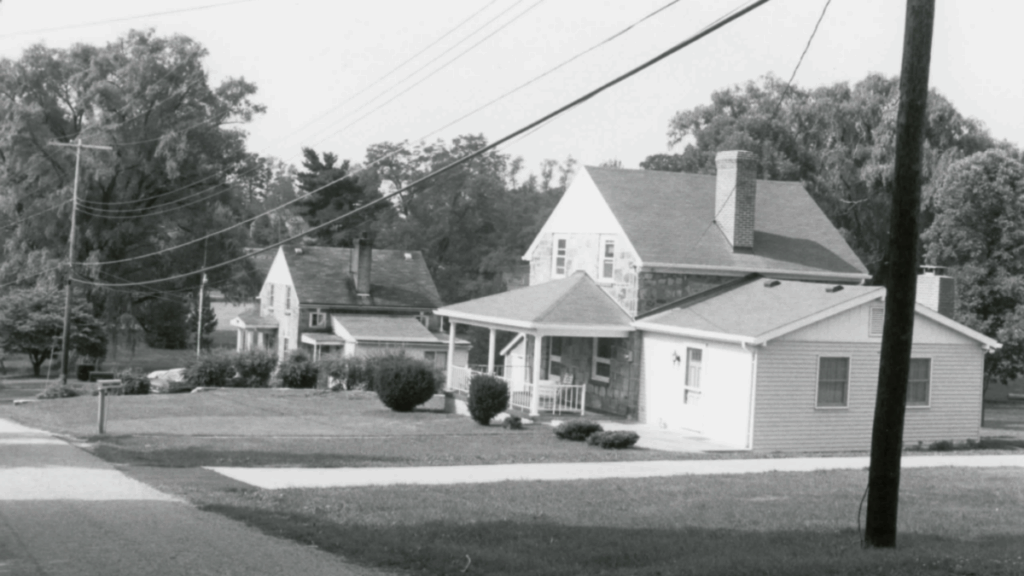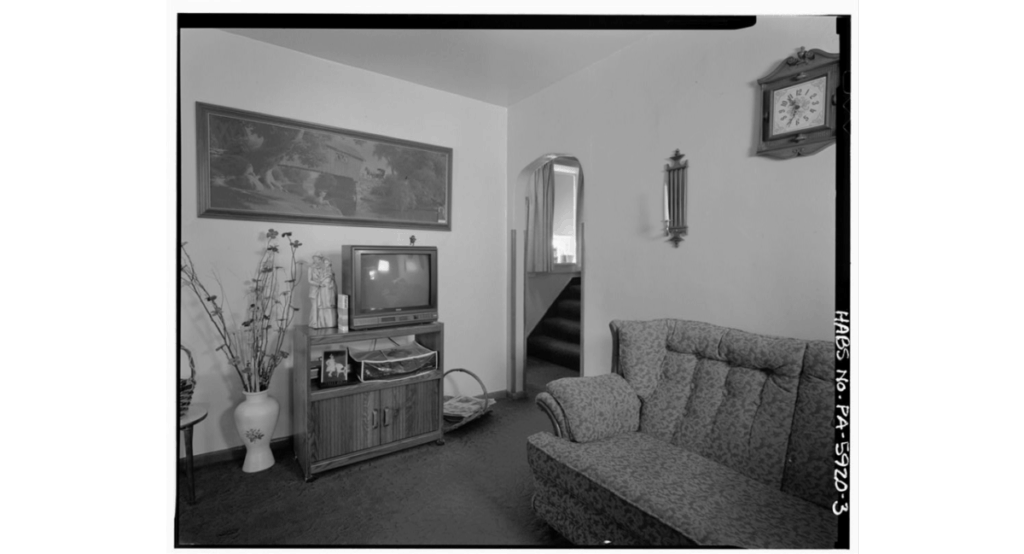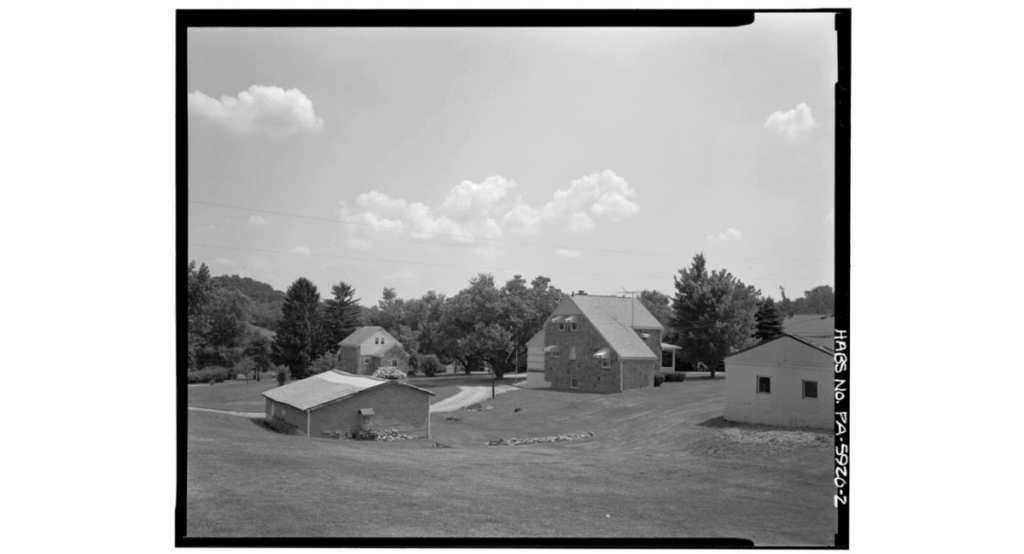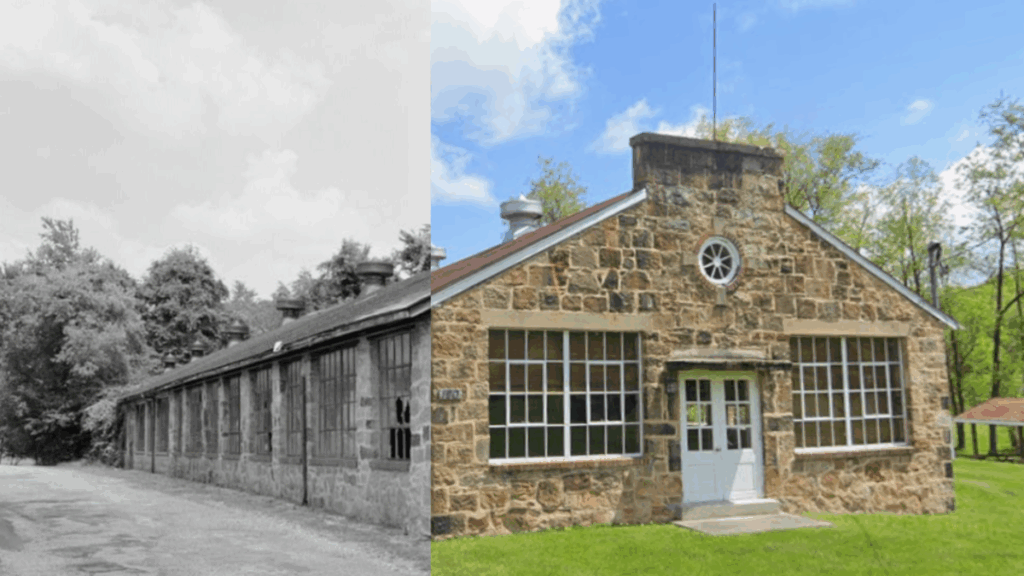Building Hope in Stone: Penn-Craft’s Community Roots
published on October 21, 2025



In the rolling hills of Fayette County, Pennsylvania, a quiet experiment in community, cooperation, and dedication took shape during the depths of the Great Depression.
Its name, Penn-Craft, was chosen to honor both William Penn and the land’s former owner, Isaiah Craft. But the name also reflected something deeper: the belief that ordinary people, through their own craft and effort, could build a better life.
Unlike many “back-to-the-land” homestead projects of the 1930s that were sponsored by the federal government, Penn-Craft was the vision of the American Friends Service Committee (AFSC), a private Quaker relief group known for its humanitarian work. Led by Clarence Pickett, the AFSC sought to prove that self-help and cooperation could succeed where bureaucracy often failed.
The goal was to give unemployed coal miners and their families a chance to rebuild their lives through home ownership, community, and shared labor. Penn-Craft would be a non-governmental living experiment in social and environmental reform.
The Residents
In 1937, the AFSC purchased the 200-acre Craft farm near Republic, Pennsylvania. Fifty families were carefully chosen to represent Fayette County’s ethnic diversity from hundreds of applicants. They were miners, laborers, and families displaced by the collapse of the coal and coke industries. To qualify, they had to prove not only need but also a willingness to work hard alongside their neighbors.
Each family received a modest loan of $2,000 to build their home, repayable over twenty years. In return, they contributed 2,750 hours of labor to build their own house and those of others. Using sandstone quarried nearby and salvaged brick from dismantled coke ovens, the homesteaders literally built their community from the land itself.

The Design
The architect, William Macy Stanton, had designed the Tennessee Valley Authority town of Norris and Cumberland Homesteads in Tennessee. His five different floorplans for Penn-Craft homes were practical yet charming: one-and-a-half-story stone cottages, solid and simple, each with a garden large enough to feed a family and to sell any surplus at the cooperative store.

The Cooperative
More than a housing project, Penn-Craft was a community built on Quaker ideals. Residents formed the Penn-Craft Community Association, electing officers and running committees for farming, social life, and education. They opened a cooperative store, which later boasted the county’s first frozen-food locker plant, and a knitting mill that produced thousands of sweaters before World War II.
The AFSC encouraged self-governance and learning. Homesteaders attended classes in nutrition, childcare, and agriculture while children joined Scouts and clubs. The community published its own newsletter, The Penn-Craft, beginning in 1939. First Lady Eleanor Roosevelt visited that same year, praising the community’s efforts to rebuild dignity through work.
At first, the families combined subsistence farming with cooperative enterprises. The knitting mill, led by Louis Gallet, trained women and teens when the men returned to the mines during the war. By 1947, the factory employed nearly 100 people.

Penn-Craft Today
Penn-Craft grew again after the war with a second phase of homes built for returning veterans and the children of original settlers. The community adapted, but its cooperative spirit remained strong.
Listed on the National Register of Historic Places, Penn-Craft is more than a historic district, it’s a living testament to what can happen when compassion, practicality, and persistence come together. It proved that community could be built not just with stone and mortar, but with hope, hard work, and shared purpose.
Today, Penn-Craft still stands as a rare and remarkably intact example of Depression-era community planning. Its stone houses line curving roads, its fields recall farming efforts, and some descendants of the original families still call it home. The former knitting factory building is now the Penn-Craft Community Center, which may be rented for private and community events.
“We are all part of a great experiment in the world of economics and human relations,” wrote project manager David Day in 1937. Nearly ninety years later, Penn-Craft continues to prove that experiment a success.
References:
Orslene, Louis and Shearer, Susan. “National Register of Historic Places Nomination: Penn-Craft Historic District.” 1989.
U.S. Department of the Interior. National Park Service. “Historic American Buildings Survey – Subsistence-Homestead Towns, Penn-Craft, Fayette County, Pennsylvania. Written Historical and Architectural Data.” HABS No. PA-5919.
U.S. Department of the Interior. National Park Service. “Historic American Buildings Survey – Town of Penn-Craft, Fayette County, Pennsylvania. Photographs, Written Historical and Architectural Data.” HABS No. PA-5920.
